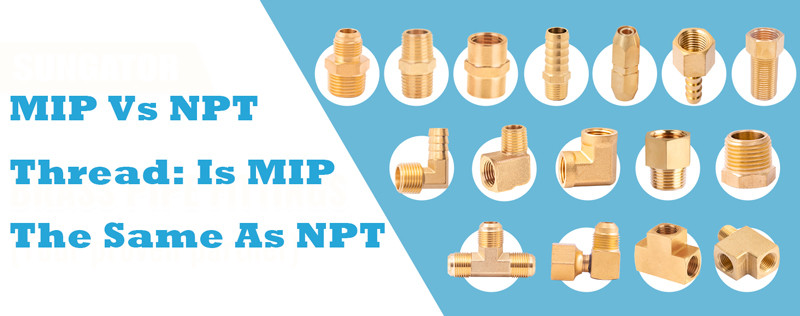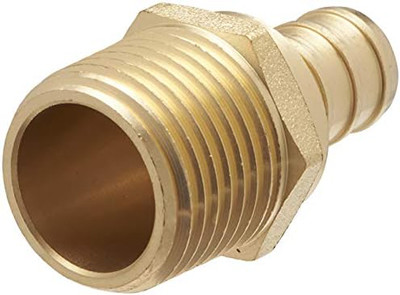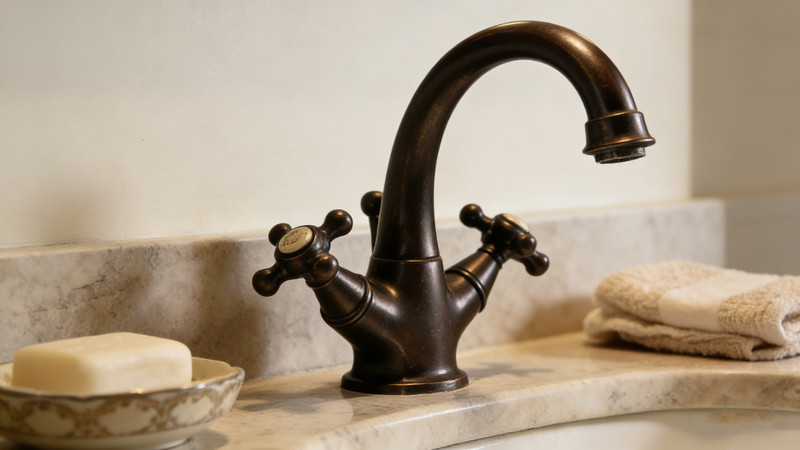
In the world of plumbing and pipe fitting, threads are a crucial component that ensures a secure and leak-free connection between various components. Two common thread standards used in plumbing are MIP (Male Iron Pipe) and NPT (National Pipe Thread). While they may seem similar, they have important differences. In this post, we’ll explore MIP vs NPT thread and answer the question: Is MIP the same as NPT?
Understanding MIP (Male Iron Pipe) Threads
MIP, which stands for Male Iron Pipe, is a type of threading standard widely used in plumbing and pipe fittings. These threads are designed to create a secure and sealed connection when joining pipes and other plumbing components. MIP threads are also referred to as “Iron Pipe” threads, even though they are commonly used with materials other than iron, such as copper, brass, and plastic.
MIP threads are characterized by their external thread design. They are typically found on the outside of a fitting or pipe, and the thread pattern consists of straight, parallel grooves. To connect two MIP-threaded components, one fitting must have external MIP threads, and the other must have internal threads that match the size and pitch.
Understanding NPT (National Pipe Thread) Threads

NPT, or National Pipe Thread, is another widely used threading standard in plumbing and pipe fitting. NPT threads are known for their tapered design, which means the threads gradually get narrower towards the end of the fitting or pipe. This tapering helps create a tighter seal as the components are threaded together, preventing leaks and ensuring a secure connection.
NPT threads come in two variations: NPT (American National Standard Taper Pipe Thread) and NPTF (National Pipe Thread Fuel). NPTF threads are designed to provide an even tighter seal and are commonly used in applications where preventing leakage is critical, such as in hydraulic systems.
The Key Differences between MIP vs NPT Threads
Now that we’ve defined both MIP and NPT threads, let’s examine the key differences between these two thread types:
1. Thread Design: The most notable difference is the thread design. MIP threads are straight and parallel, while NPT threads are tapered. This tapering is what allows NPT threads to create a tighter and more reliable seal.
2. Sealing Mechanism: MIP threads rely on gaskets or sealing compounds to create a watertight connection, while NPT threads use the taper design to create a mechanical seal. This difference in sealing mechanism means NPT threads are often preferred when a leak-free connection is critical.
3. Interchangeability: MIP and NPT threads are not interchangeable. Attempting to connect a MIP-threaded fitting to an NPT-threaded fitting will not result in a secure or leak-free connection.
4. Common Usage: MIP threads are more common in applications where a watertight seal is not as critical, such as water supply lines, irrigation systems, and some household plumbing. NPT threads are prevalent in applications where a secure and leak-free connection is crucial, such as gas lines, hydraulic systems, and high-pressure plumbing.
Can MIP and NPT Threads Ever Be Used Together

In most cases, MIP and NPT threads are not meant to be used together due to their fundamental differences in design and sealing mechanisms. Attempting to combine them without the appropriate adapters or fittings would likely result in leaks and an insecure connection.
However, there are situations where adapters and transition fittings are available to bridge the gap between MIP and NPT threads. These adapters provide a connection point between the two types of threads, allowing for the use of both MIP and NPT components within a single plumbing system. It’s essential to choose the appropriate adapter and ensure a reliable seal, but this should only be done when there are no better alternatives.
Conclusion: Is MIP the Same As NPT
In conclusion, MIP (Male Iron Pipe) and NPT (National Pipe Thread) are not the same. They differ in terms of their thread design, sealing mechanism, and common applications. MIP threads have straight, parallel grooves and rely on gaskets or sealing compounds for a watertight connection. NPT threads, on the other hand, have a tapered design that creates a mechanical seal, making them ideal for applications where preventing leaks is crucial.
Understanding the differences between MIP and NPT threads is essential for anyone working in the plumbing and pipe fitting industry. Using the correct thread type for a specific application ensures the safety, integrity, and efficiency of the plumbing system. While MIP and NPT threads may not be interchangeable, there are adapters available for those rare instances where they need to be combined. However, it’s always best to use the appropriate thread type for the job to avoid potential leaks and problems down the line.
 WOWOW Faucets
WOWOW Faucets




